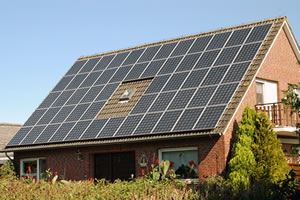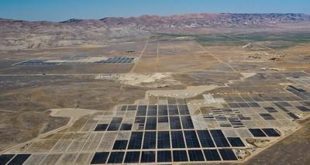 November 10, 2011—According to EnergyTrend, a research division of TrendForce, as product price continues to fall, midstream Taiwanese PV manufacturers’ profits are shrinking. In response to the recent price drop, manufacturers have already lowered their utilization rates; some makers have gone so far as to suspend production to counter the latest price decrease. As for the spot market, inventory dumping remains prevalent, but there are still few concluded deals. EnergyTrend indicates that trading prices have hit a new low, which means that manufacturers will continue to face immense inventory pressure.
November 10, 2011—According to EnergyTrend, a research division of TrendForce, as product price continues to fall, midstream Taiwanese PV manufacturers’ profits are shrinking. In response to the recent price drop, manufacturers have already lowered their utilization rates; some makers have gone so far as to suspend production to counter the latest price decrease. As for the spot market, inventory dumping remains prevalent, but there are still few concluded deals. EnergyTrend indicates that trading prices have hit a new low, which means that manufacturers will continue to face immense inventory pressure.
The industry is gearing up for a long winter, but facing such a harsh environment, manufacturers in the PV supply chain have begun to conduct strategic alliances or mergers. Makers are aiming to find a way out of the cutthroat, price-slashing market by improving profitability and supply and demand balance. GCL-Poly has been the most active in this regard – they will continue to expand capacity, capitalizing on their production scale and cost advantage to advance on the wafer market. GCL-Poly is also aggressively laying plans for the integration of downstream systems and power plant bids, in order to enter the end market and to develop both ends of the smiling curve theory. As for components like solar cells and modules, GCL-Poly is currently searching for business partners.
As for Taiwanese manufacturers, affected by the nature of their position, they are currently cooperating with upstream clients, downstream clients, or each other in order to increase shipments, lower makers’ inventory risk, and escape the cutthroat market. For instance, with cooperation from GCL-Poly, Kenmec, backed by their experience with automatic equipment, solar cells, and modules, has successfully broken into China’s power plant bidding market.
As for this week’s spot prices, polysilicon, Si wafer, and solar cell price are all on a downtrend. Lowest polysilicon price was US$25/kg, while ASP fell to US$30.1/kg, a decrease of 5.05%. In terms of Si wafers, lowest multi-Si wafer price fell to US$1.1/piece, whereas mono-Si wafer price fell to US$1.6/piece. This week’s multi-Si wafer price decreased significantly, with ASP declining by 4.47% to US$1.303/piece. EnergyTrend believes multi-Si wafer ASP may reach a low of US$1.2/piece in November. Mono-Si wafer ASP fell to US$1.827/piece, a decrease of 3.18%. Lowest solar cell price stayed at US$0.41/Watt, while ASP decreased by 3.41% to US$0.539/Watt. In terms of solar modules, while ASP fell by 1.21% to US$0.983/Watt, the decrease was smaller than last week’s, which EnergyTrend indicates may be attributed to demand recovery on the European market.
 Alternative Energy HQ solar power for homes, wind energy, and bio fuel issues
Alternative Energy HQ solar power for homes, wind energy, and bio fuel issues







its crazy how mad the solar power market has got, but its a good thing, they are a goo idea but people are usually not keen on paying those prices but as companies start to be more competitive then the prices will drop